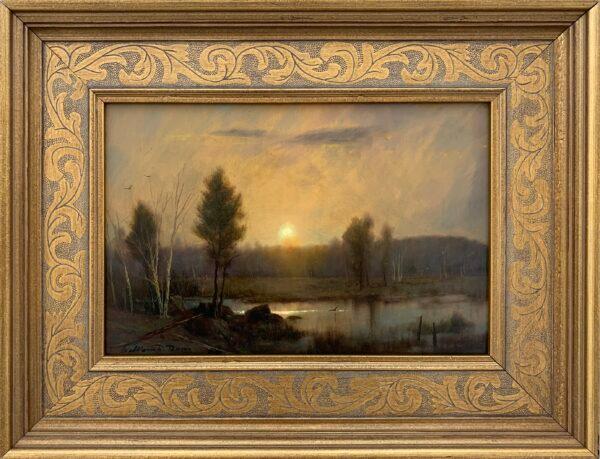In William R. Davis’s landscape painting, “Late Day Colors,” the last light of the late sun illuminates the sky and sends a shimmer of light onto a lake: It’s the sun’s final hurrah before disappearing behind a distant forest. In another painting, “Bouquet,” by Daniel Caro, a glorious bunch of sunflowers and yellow roses cheerfully announces itself in a white ceramic vase. Then there’s a sensitively rendered self-portrait by Kristen Valle Yann in a white headscarf; she gazes off the edge of the painting, deep in thought. All three paintings are different from each other, yet they have two things in common: Each is painted directly from life rather than from a photograph, and all are featured in the same exhibition, “The 10th Annual Holiday Small Works Exhibition” at the Collins Galleries, Orleans, in Cape Cod, Massachusetts.







